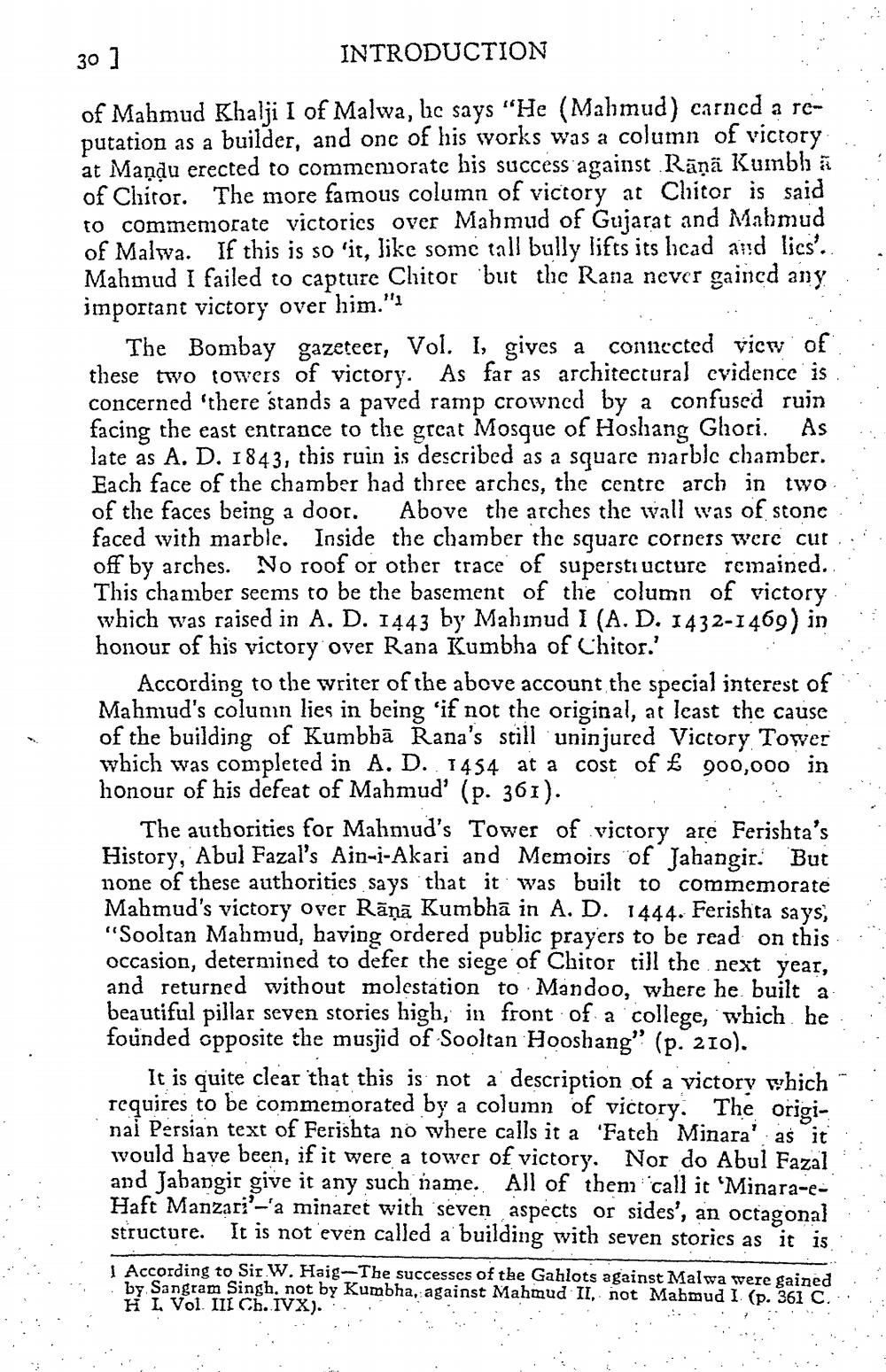________________
30 ]
INTRODUCTION of Mahmud Khalji I of Malwa, lic says "He (Mahmud) carned a re- i putation as a builder, and one of his works was a column of victory at Maņdu erected to commemorate bis success against Rāna Kumbh ā . of Chiror. The more famous column of victory at Chicor is said to commemorate victories over Mahmud of Gujarat and Mahmud of Malwa. If this is so 'it, like some call bully lifts its head and lics'.. Mahmud I failed to capture Chitor 'but thc Rana never gained any important victory over him."!
The Bombay gazeteer, Vol. I, gives a connected view of . these two towers of victory. As far as architectural evidence is.' concerned 'there stands a paved ramp crowned by a confused ruin : facing the east entrance to the great Mosque of Hoshang Ghori. As late as A. D. 1843, this ruin is described as a square marblc chamber. Each face of the chamber had three arches, the centre arch in two of the faces being a door. Above the arches the wall was of stone faced with marble. Inside the chamber the square corners were cut ... off by arches. No roof or other trace of superstiucture remained. This chamber seems to be the basement of the column of victory which was raised in A. D. 1443 by Mahinud I (A.D. 1432-1469) in honour of his victory over Rana Kumbha of Chitor.'
According to the writer of the above account the special interest of Mahmud's colunin lies in being 'if not the original, at least the cause of the building of Kumbhā Rana's still uninjured Victory Tower which was completed in A. D. 1454 at a cost of £ 900,000 in honour of his defeat of Mahmud' (p. 361).
The authorities for Mahmud's Tower of victory are Ferishta's History, Abul Fazal's Ain-i-Akari and Memoirs of Jahangir. But none of these authorities says that it was built to commemorate Mahmud's victory over Rānā Kumbha in A. D. 1444. Ferishta says, "Sooltan Mahmud, having ordered public prayers to be read on this : occasion, determined to defer the siege of Chitor till the next year, and returned without molestation to Mandoo, where he built a beautiful pillar seven stories high, in front of a college, which he founded opposite the musjid of Sooltan Hooshang” (p. 210).
It is quite clear that this is not a description of a victory which . requires to be commemorated by a column of victory. The originai Persian text of Ferishta no where calls it a 'Fateh Minara' as it . would have been, if it were a tower of victory. Nor do Abul Fazali and Jahangir give it any such name. All of then call it ‘Minara-eHaft Manzari'-'a minaret with seven aspects or sides', an octagonal structure. It is not even called a building with seven stories as it is.
1 According to Sir W. Haig-The successes of the Gahlots against Malwa were gained by Sangram Singh, not by Kumbha, against Mahmud II, not Mabmud I (p. 361 C. HI Vol. III Ch. IVX)..
.




